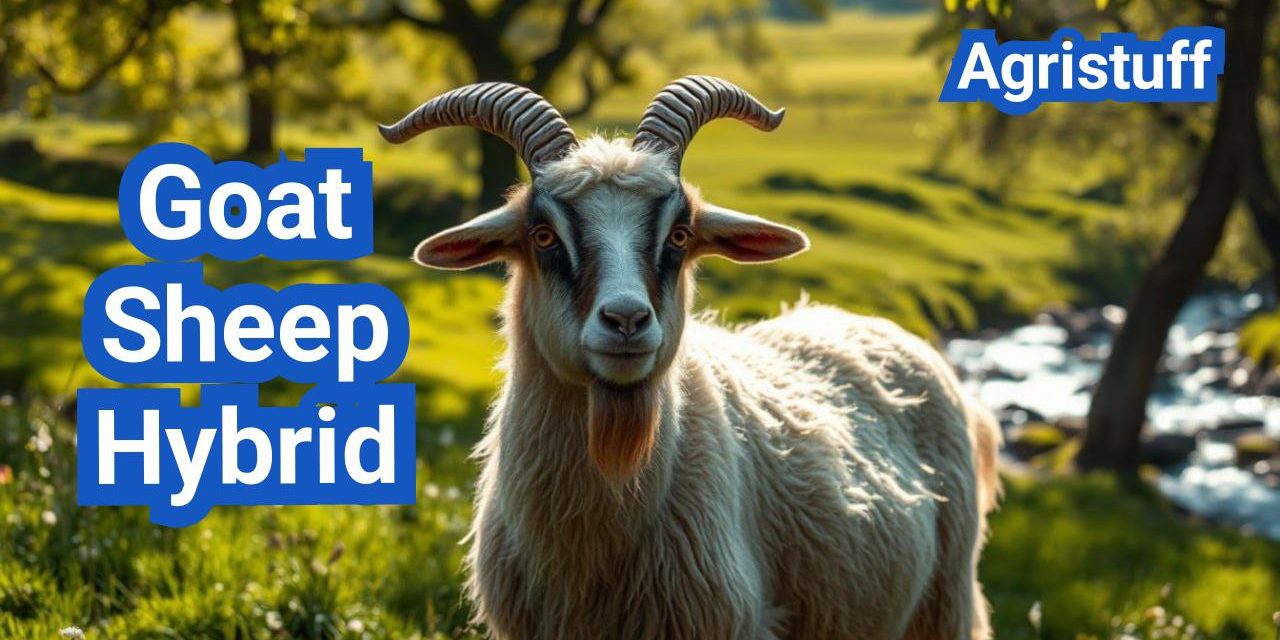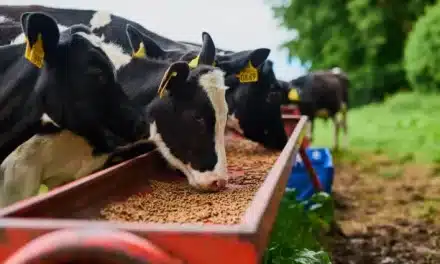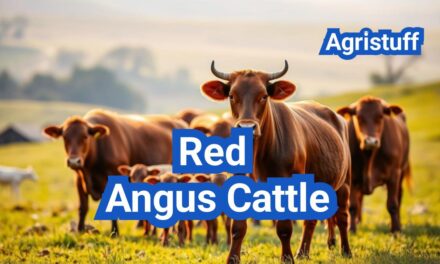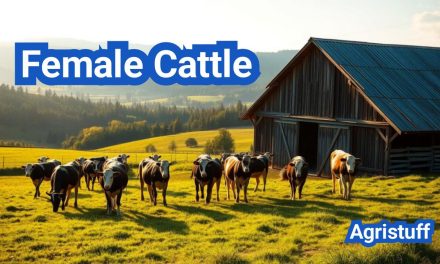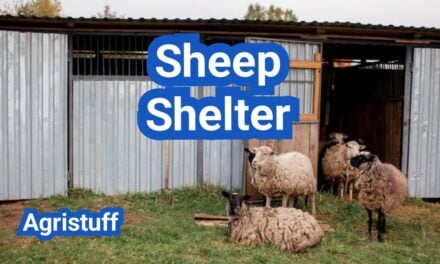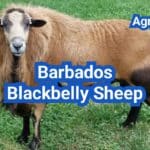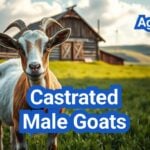The concept of a goat sheep hybrid has sparked curiosity among animal enthusiasts and farmers alike. The possibility of such a hybrid raises questions about genetic compatibility and the characteristics of the offspring.
While goats and sheep are distinct species, they share a close genetic relationship, making hybridization theoretically possible. However, the viability and traits of such hybrids are subjects of debate.
This article will explore the facts and myths surrounding goat sheep hybrids, examining their genetic compatibility, characteristics, and the potential benefits and drawbacks.
Key Takeaways
- Understanding the genetic compatibility of goats and sheep.
- Examining the characteristics of goat sheep hybrids.
- Discussing the potential benefits and drawbacks of hybridization.
- Separating facts from myths in the context of goat sheep hybrids.
- Exploring the viability of goat sheep hybrids.
Understanding Goats and Sheep as Distinct Species
Understanding the differences between goats and sheep requires an examination of their taxonomic classification and evolutionary relationship. Both goats and sheep belong to the Caprinae subfamily, but they are distinct species with different characteristics.
Taxonomic Classification and Evolutionary Relationship
Goats and sheep are both members of the Bovidae family and the Caprinae subfamily. However, they belong to different genera: goats are classified under the genus Capra, while sheep are under the genus Ovis. This distinction is a result of their evolutionary paths, which diverged millions of years ago.
The taxonomic classification of goats and sheep highlights their unique evolutionary histories. Studies have shown that these species have distinct genetic differences, which are crucial in understanding their ability to produce viable hybrids.
Key Taxonomic Differences:
- Genus: Goats (Capra) vs. Sheep (Ovis)
- Family: Both belong to Bovidae
- Subfamily: Both are part of Caprinae
Key Biological and Behavioral Differences
Several biological and behavioral differences distinguish goats from sheep. One of the most notable differences is their feeding behavior; goats are browsers, while sheep are grazers. This difference impacts their digestive system and overall health.
Other key differences include:
- Horn Shape and Size: Goats have more rugged, backward-curving horns, whereas sheep have spiral horns.
- Coat: Goats generally have a coarser coat compared to sheep.
- Behavior: Goats are more agile and tend to climb, while sheep are more sedentary.
These differences are not just superficial; they reflect deeper genetic and physiological distinctions that are crucial when considering the possibility of hybridization between the two species.
What Is a Goat Sheep Hybrid?

The concept of a goat sheep hybrid, often referred to as a “geep,” has sparked curiosity among animal enthusiasts and scientists alike. A goat sheep hybrid is the offspring of a goat and a sheep, two species that are closely related but distinct.
The term “geep” is a portmanteau of “goat” and “sheep,” used to describe this rare hybrid. The existence of such hybrids has been a topic of interest, with various claims and documentation throughout history.
Definition and Terminology of “Geep”
The term “geep” is colloquially used to refer to the hybrid offspring of a male goat (buck) and a female sheep (ewe). This terminology is not universally accepted in scientific communities, where the term “sheep-goat hybrid” or “goat-sheep hybrid” might be preferred for clarity.
Understanding the definition and terminology is crucial for discussing the phenomenon of geeps. It is essential to differentiate between colloquial terms and scientifically accurate descriptions.
Historical Documentation of Alleged Hybrids
Historical records of alleged goat sheep hybrids date back several decades. One of the earliest documented cases was reported in the context of agricultural experiments.
| Year | Location | Description |
|---|---|---|
| 1984 | UK | First reported case of a geep |
| 2000 | USA | Documented breeding of a sheep-goat hybrid |
| 2010 | Australia | Successful birth of a viable geep |
These historical cases demonstrate the ongoing interest in and study of goat sheep hybrids. The table above summarizes some of the notable instances.
The study of goat sheep hybrids not only provides insights into the possibilities of cross-species breeding but also contributes to our understanding of genetic compatibility and reproductive biology.
The Science of Goat Sheep Hybrid Possibilities
Scientists have been intrigued by the potential for creating hybrids between goats and sheep, two closely related species. This interest stems from the desire to understand the genetic and biological factors that influence the viability of such hybrids.
Genetic Compatibility Requirements
The genetic compatibility between goats and sheep is a critical factor in determining the success of hybridization attempts. For a hybrid to be viable, the genetic material from both parents must be compatible enough to allow for proper development. This involves not just the overall genetic similarity between the two species but also the compatibility of their reproductive biology.
Key genetic factors include the number of chromosomes and the genetic mechanisms that control reproductive isolation. Goats (Capra aegagrus hircus) and sheep (Ovis aries) are both members of the Bovidae family but belong to different genera and have different numbers of chromosomes (60 in goats and 54 in sheep). This difference can complicate the hybridization process.
Haldane’s Rule in Goat-Sheep Hybridization
Haldane’s Rule states that if there is a barrier to hybridization between two species, it is more likely to affect the heterogametic sex—the sex that has two different sex chromosomes. In mammals, this is typically the male. The rule has implications for goat-sheep hybridization, as it suggests that male hybrids may face greater challenges in terms of viability or fertility.
The application of Haldane’s Rule to goat-sheep hybrids indicates that any male offspring resulting from such a cross may experience reduced fertility or viability compared to female hybrids. This principle guides researchers in understanding the potential outcomes of interspecies breeding between goats and sheep.
Famous Documented Cases of Goat Sheep Hybrids
While goat-sheep hybrids are uncommon, there are notable cases that have been verified and studied extensively in the scientific community. These cases provide valuable insights into the genetic and biological aspects of hybridization between goats and sheep.
Spring Rose: The Confirmed Geep
One of the most well-documented cases of a goat-sheep hybrid is Spring Rose, a fertile geep born in 1984 in the United States. Spring Rose was the result of an accidental breeding between a goat and a sheep. This hybrid was significant not only because of its rarity but also due to its fertility, which is unusual in cross-species hybrids. Spring Rose has been the subject of various scientific studies, contributing to our understanding of the viability and characteristics of goat-sheep hybrids.
Arthur Schubarth’s Rare Sheep-Goat Hybrid
Arthur Schubarth, a breeder in the United States, has been involved in documented cases of sheep-goat hybrids. His work has contributed to the understanding of the genetic compatibility between sheep and goats. Schubarth’s hybrids have been noted for their unique characteristics and have provided insights into the potential for successful breeding between the two species.
Other Verified Cases Worldwide
In addition to Spring Rose and Arthur Schubarth’s hybrids, there have been other verified cases of goat-sheep hybrids worldwide. These cases, while rare, have been documented in various countries and have contributed to the scientific understanding of hybridization. They highlight the complexities and challenges associated with cross-species breeding.
The study of these hybrids not only expands our knowledge of genetic compatibility but also has implications for agriculture and animal husbandry. As research continues, the documentation of such cases remains crucial for advancing our understanding of these unique animals.
Physical Characteristics of Goat Sheep Hybrids
Observing the physical attributes of goat sheep hybrids reveals a mix of characteristics from both goats and sheep. These hybrids, often referred to as “geeps,” can exhibit a range of traits that are influenced by their parent species.
Sheep Goat Hybrid Horns and Head Features
The horns of goat sheep hybrids can vary significantly. Some may have horns that resemble those of goats, with a more rugged and textured surface, while others may have smoother horns akin to those found in sheep. The size and shape of the horns can also differ, depending on the genetic contribution from the parents.
Horn Characteristics in Hybrids:
| Trait | Goat Influence | Sheep Influence |
|---|---|---|
| Horn Texture | Rugged, textured | Smooth |
| Horn Size | Variable, often larger | Generally smaller |
| Horn Shape | More curved or spiral | More straight or lyrate |
The head features of these hybrids can also show a mix of goat and sheep characteristics. For instance, the ears may be more erect like a goat’s or pendulous like a sheep’s. The facial structure can vary, with some hybrids having a more pronounced Roman nose or a straighter profile.
Body Structure and Coat Patterns
The body structure of goat sheep hybrids can be robust, often inheriting the sturdy build of their parent species. The coat patterns and coloration can vary widely, ranging from the dense, woolly coats of sheep to the lighter, more agile coats of goats. Some hybrids may display a mix of coat types, with a woolly undercoat and a coarser outer layer.
Coat Patterns and Coloration:
- Variable coloration, including white, black, brown, and mixed patterns
- Coat texture can range from fine and woolly to coarse and hairy
- Some hybrids may exhibit a seasonal coat change, influenced by their goat heritage
In conclusion, the physical characteristics of goat sheep hybrids are diverse and influenced by the genetic traits of their goat and sheep parents. Understanding these characteristics can provide insights into the biology and potential applications of these unique animals.
Reproduction and Fertility in Sheep Goat Hybrids

Sheep goat hybrids, known as “geeps,” present a fascinating case study in cross-species breeding, with implications for fertility and reproduction. The possibility of producing fertile offspring from such hybrids is a topic of considerable interest among breeders and scientists.
Fertility Challenges in Cross-Species Breeding
Cross-species breeding between goats and sheep can result in significant fertility challenges. Hybrid sterility is a common issue, where the offspring are unable to reproduce. This phenomenon is often attributed to genetic differences between the parent species, which can disrupt the normal functioning of reproductive cells in the hybrids.
The genetic compatibility between goats and sheep is a critical factor influencing the fertility of their hybrids. Research has shown that the success of cross-species breeding depends on various genetic and environmental factors, including the similarity in the number of chromosomes between the two species and the presence of compatible genetic material.
Documented Breeding Attempts and Outcomes
Several documented cases illustrate the outcomes of breeding sheep goat hybrids. For instance, a notable case involved the birth of a fertile geep, which was capable of reproducing. Such instances are rare and often receive significant attention in scientific literature.
Breeding attempts have also highlighted the difficulties in achieving viable offspring. Many hybrids suffer from developmental issues or are born with significant health problems, further complicating the reproductive process.
In conclusion, while sheep goat hybrids can be produced through cross-species breeding, their fertility remains a complex issue. Further research is needed to fully understand the reproductive capabilities of these hybrids and to explore potential applications in agriculture and animal husbandry.
Goat Sheep Hybrid Facts and Myths

While some view goat-sheep hybrids as mere fantasy, scientific evidence supports their existence under certain conditions. The concept of a “geep” has garnered significant attention, with many myths and misconceptions surrounding its validity and characteristics.
Common Misconceptions Debunked
Several myths have been associated with goat-sheep hybrids, including the belief that they are entirely fictional or that they are always infertile. However, documented cases have proven their existence. Let’s examine some of these misconceptions:
- Myth: Goat-sheep hybrids are always the result of artificial insemination. Reality: While many documented cases involve assisted reproduction, there are instances where hybrids occur naturally.
- Myth: All goat-sheep hybrids are infertile. Reality: While many hybrids are indeed infertile due to genetic differences between goats and sheep, there have been cases where they have reproduced.
- Myth: Goat-sheep hybrids are a recent phenomenon. Reality: Historical records show that attempts to breed goats and sheep date back centuries.
Verified Scientific Facts About Geeps
Scientific research has provided valuable insights into the characteristics and viability of goat-sheep hybrids. Some key facts include:
- The genetic compatibility between goats and sheep allows for hybridization under specific conditions.
- Geeps often exhibit a mix of physical characteristics from both parent species, such as horn shape and coat patterns.
- The fertility of geeps varies, with some being sterile while others have shown the ability to reproduce.
These facts underscore the complexity of goat-sheep hybridization, highlighting both the challenges and the fascinating biology behind these hybrids.
Natural Habitat and Behavior of Sheep Goat Hybrids

Goat sheep hybrids demonstrate remarkable flexibility in adapting to different ecological settings. This adaptability is crucial for their survival in various environments.
Adaptability to Different Environments
Sheep goat hybrids can thrive in diverse habitats due to the genetic traits inherited from their parent species. They are capable of adjusting to different climates and terrains, making them versatile livestock.
The widespread shared pasturing of goats and sheep has shown that their hybrids can adapt to a range of environmental conditions. For instance, they can be found in mountainous regions as well as in plains.
Behavioral Traits Inherited from Parent Species
Sheep goat hybrids exhibit behavioral traits from both goats and sheep. They tend to be agile like goats and social like sheep, forming close groups within their pasture.
| Trait | Inherited From | Description |
|---|---|---|
| Agility | Goats | Ability to navigate challenging terrains |
| Social Behavior | Sheep | Tendency to form close groups |
| Grazing Pattern | Both | Varied diet including grasses and shrubs |
Understanding these traits is essential for managing the habitat and behavior of sheep goat hybrids effectively.
How to Identify a True Goat Sheep Hybrid

To accurately identify a goat sheep hybrid, one must consider both physical characteristics and employ scientific verification techniques. The process involves a detailed examination of the animal’s morphology and genetic makeup.
Visual Identification Methods
Visual identification of a goat sheep hybrid involves observing its physical traits, such as coat color, body size, and horn shape. These characteristics can provide initial clues about the animal’s hybrid status.
- Coat color and pattern: Often a mix of the parent species’ characteristics.
- Body size: Typically intermediate between goats and sheep.
- Horn shape and size: Can vary, sometimes resembling one parent more than the other.
Scientific Verification Techniques
While visual inspection provides initial insights, scientific verification is crucial for confirming the hybrid status. This involves genetic testing to analyze the animal’s DNA.
| Technique | Description | Application |
|---|---|---|
| PCR (Polymerase Chain Reaction) | Amplifies specific DNA sequences | Identifies genetic markers from both parent species |
| DNA Sequencing | Determines the order of DNA nucleotides | Confirms the presence of mixed genetic material |
| Microsatellite Analysis | Examines short, repeated DNA sequences | Assesses genetic diversity and hybrid status |
By combining visual observation with genetic analysis, one can reliably identify a true goat sheep hybrid. This dual approach ensures accuracy and provides a comprehensive understanding of the animal’s heritage.
Practical Applications and Commercial Value

The practical applications of goat-sheep hybrids are vast, ranging from improved livestock characteristics to new market opportunities. These hybrids have the potential to combine the hardiness of goats with the wool-producing capabilities of sheep, making them valuable for farmers looking to diversify their livestock.
Agricultural Benefits and Limitations
Goat-sheep hybrids can offer several agricultural benefits, including:
- Improved hardiness and resistance to certain diseases
- Potential for increased wool production
- Enhanced adaptability to different environments
However, there are also limitations to consider, such as:
- Unpredictable breeding outcomes
- Potential sterility in hybrid offspring
- Higher costs associated with breeding and maintaining hybrid livestock
According to agricultural experts, “The key to successfully integrating goat-sheep hybrids into farming operations lies in understanding their unique characteristics and adapting management practices accordingly.” This may involve adjusting feeding strategies, housing conditions, and health care protocols to meet the specific needs of these hybrids.
Market Value and Pricing Considerations
The market value of goat-sheep hybrids can vary significantly based on factors such as their genetic makeup, physical characteristics, and breeding potential. Farmers and breeders interested in selling these hybrids should consider the following:
| Factor | Impact on Market Value |
|---|---|
| Genetic purity and rarity | Higher value for unique or rare genetic combinations |
| Physical characteristics (e.g., horn size, coat quality) | Desirable traits can command higher prices |
| Breeding potential and fertility | Fertile hybrids with strong breeding potential are more valuable |
As the demand for unique and resilient livestock grows, the commercial value of goat-sheep hybrids is likely to increase. Farmers and investors should stay informed about market trends and the latest research on these hybrids to maximize their returns.
“The future of livestock production may lie in the strategic use of hybrids like goat-sheep crosses, which can offer a competitive edge in challenging environments.” – Dr. Jane Smith, Livestock Expert
Other Notable Rare Farm Animal Hybrids

Rare farm animal hybrids are not limited to goat-sheep hybrids; other unique combinations have emerged within the Caprinae subfamily. These hybrids offer valuable insights into the possibilities and challenges of cross-species breeding.
Comparison with Other Caprinae Hybrids
The Caprinae subfamily includes various species that can interbreed and produce viable offspring. For instance, hybrids between different species of goats and between goats and other related species have been documented. A notable example is the hybrid between a domestic goat (Capra aegagrus hircus) and a markhor (Capra falconeri), which is one of the largest species of wild goat.
These hybrids often exhibit desirable traits from both parent species, such as improved hardiness, enhanced fertility, or unique physical characteristics. For example, a hybrid between a domestic sheep and a mouflon (Ovis orientalis) can inherit the mouflon’s robust build and the domestic sheep’s docility.
| Hybrid Combination | Parent Species | Notable Traits |
|---|---|---|
| Goat x Markhor | Capra aegagrus hircus x Capra falconeri | Large size, robust horns |
| Sheep x Mouflon | Ovis aries x Ovis orientalis | Robust build, docile nature |
Lessons from Successful Hybrid Species
Successful hybrid species within the Caprinae subfamily offer several lessons for farmers and breeders. Firstly, the genetic compatibility of the parent species is crucial for producing viable and fertile offspring. Secondly, careful selection of breeding stock can help to enhance desirable traits while minimizing the risk of inherited health issues.
“The success of hybrid breeding programs depends on a deep understanding of the genetic and environmental factors that influence the traits of the offspring.”
— Dr. Jane Smith, Animal Geneticist
Furthermore, hybrid farming can contribute to the development of novel livestock species that are better adapted to specific environmental conditions or production systems. For instance, hybrids that combine the hardiness of wild species with the productivity of domesticated species can offer significant advantages in challenging environments.
In conclusion, exploring other notable rare farm animal hybrids within the Caprinae subfamily provides valuable insights into the potential benefits and challenges of hybrid farming. By understanding the characteristics and applications of these hybrids, farmers and breeders can make informed decisions about their use in agricultural practices.
Goat Sheep Hybrids in Popular Culture

The concept of goat sheep hybrids has fascinated the public, leading to their appearance in various forms of media and popular culture. This phenomenon is not just a reflection of public interest but also influences how people perceive these hybrids.
Representation in Media and Games
Goat sheep hybrids have been featured in various media, including television shows and films that often use them as a symbol of unusual or exotic creatures. In the gaming world, goat sheep hybrids have appeared in games like Minecraft, where players can encounter or breed them, adding a layer of realism and complexity to the game environment. This representation in popular media and games not only entertains but also educates the public about the possibility and characteristics of such hybrids.
In addition to visual media, goat sheep hybrids have been referenced in literature and puzzles. For instance, crossword puzzles often include clues related to “goat sheep hybrid crossword clue,” challenging enthusiasts and reinforcing the cultural presence of these creatures.
Puzzles and Trivia References
The inclusion of goat sheep hybrids in puzzles and trivia reflects their integration into popular culture. These references serve as a testament to the public’s fascination with unusual animals and the desire to learn more about them. By engaging with these puzzles, the public demonstrates an interest in the subject matter, further solidifying the hybrids’ place in cultural consciousness.
Moreover, the appearance of goat sheep hybrids in popular culture has implications for their perception. By being represented in a variety of contexts, from entertainment to educational puzzles, these hybrids become more relatable and understandable to the general public. This increased visibility can lead to a greater appreciation and understanding of the biological and cultural significance of goat sheep hybrids.
Understanding the Rarity and Significance of Goat-Sheep Hybrids
Goat-sheep hybrids, also known as “geeps,” are rare animal species that have garnered significant attention due to their unique genetic makeup. The existence of these hybrids highlights the complexities of genetic diversity and the potential for cross-species breeding in hybrid livestock.
The rarity of goat-sheep hybrids can be attributed to the genetic differences between goats and sheep, making successful breeding challenging. However, documented cases of these hybrids have provided valuable insights into the possibilities of genetic compatibility and the characteristics of offspring.
The significance of goat-sheep hybrids extends beyond their rarity, as they offer potential benefits for agriculture and genetic research. By studying these hybrids, scientists can gain a deeper understanding of the genetic factors that influence fertility and viability in cross-species breeding.
As research continues to uncover the secrets of goat-sheep hybrids, their importance in the context of genetic diversity and hybrid livestock is becoming increasingly apparent. These rare animal species serve as a fascinating example of the complexities and possibilities inherent in genetic research.
FAQ
Can a goat breed with sheep?
Yes, it is theoretically possible for goats and sheep to breed, but it’s extremely rare and often doesn’t result in viable offspring.
What is a goat-sheep hybrid called?
A goat-sheep hybrid is commonly referred to as a “geep.”
Are goat-sheep hybrids fertile?
Generally, goat-sheep hybrids are not fertile due to genetic differences between the two species, following Haldane’s Rule.
What are the characteristics of a goat-sheep hybrid?
Goat-sheep hybrids can exhibit a mix of characteristics from both parents, including horn shape, coat patterns, and body structure.
How are goat-sheep hybrids created?
Goat-sheep hybrids are created through crossbreeding between goats and sheep, which can occur naturally or through artificial insemination.
What are the benefits of goat-sheep hybrids?
Potential benefits include hardiness, unique characteristics, and possible advantages in certain agricultural settings.
What are the drawbacks of goat-sheep hybrids?
Drawbacks include the rarity of viable offspring, potential fertility issues, and the need for careful management.
Can geep reproduce?
Generally, geeps are not fertile, making reproduction challenging.
How much is a geep worth?
The value of a geep can vary widely depending on factors like location, breeder reputation, and the animal’s characteristics.
Are goat-sheep hybrids recognized as a distinct breed?
No, goat-sheep hybrids are not recognized as a distinct breed by most agricultural or breed registries.
What is the future of goat-sheep hybrids in agriculture?
The future may involve niche applications or research into their potential benefits and challenges.
Can goats and sheep be pastured together?
Yes, goats and sheep can be pastured together, and this practice is common in some regions.
What are some other rare farm animal hybrids?
Other examples include hybrids within the Caprinae subfamily and other livestock species.
How are goat-sheep hybrids represented in popular culture?
They appear in media, games, and puzzles, often symbolizing unusual or exotic animals.
Conclusion of: Goat Sheep Hybrid
The goat sheep hybrid is a fascinating topic that captures the imagination—mixing two beloved farm animals into one. But can a goat sheep hybrid realistically happen? In this article, we’ll explore the facts, debunk myths, and uncover real-world cases involving this rare cross.
What Is a Goat Sheep Hybrid?
A goat sheep hybrid, sometimes called a “geep” or “shoat,” is the offspring of a goat and a sheep. Genetically, this pairing poses challenges: sheep have 54 chromosomes while goats carry 60. These mismatched chromosomes typically result in embryos that fail to develop or stillbirths. Yet, despite this, a goat sheep hybrid can occasionally survive, albeit very rarely.
Why Are Goat Sheep Hybrid Offspring So Rare?
The rarity of a goat sheep hybrid is largely due to genetic incompatibilities. Sheep and goats belong to different genera—Ovis and Capra respectively—and their chromosome count differences create mismatches during cell division. Most of these hybrids either miscarry or are stillborn. Even when born, surviving goat sheep hybrid offspring typically face health struggles and reproductive challenges.
Documented Cases of Goat Sheep Hybrid Births
Although uncommon, documented reports of a goat sheep hybrid exist around the world. In Botswana in 2000, a live goat sheep hybrid with 57 chromosomes was born. Another occurred in New Zealand in 1990; surprisingly, a female goat sheep hybrid there was even fertile when bred back with a ram.
France and Germany have reported similar births, with at least one case in each country during the late 20th and early 21st century. In Ireland, a famous case occurred in 2014 when a farmer named Paddy Murphy witnessed a goat sheep hybrid (commonly called a geep) that survived to adulthood and displayed the distinct traits of both species.
Traits and Fertility of a Goat Sheep Hybrid
A goat sheep hybrid tends to show mixed physical traits: coarse goat-like hair, woolly undersides, long legs, and horns. One male hybrid in Botswana exhibited high libido and the ability to mount both sheep and goats, though he was infertile. Female hybrids sometimes break expectations of Haldane’s rule and can exhibit fertility. There are confirmed cases of female goat sheep hybrids giving birth after mating with a ram.
Genetic Failures and Survival Challenges
Most goat sheep hybrid embryos fail early due to chromosomal mismatches that disrupt development. Even live-born hybrids often suffer from complications, like stillbirths or health issues. Some survive infancy, but their viability and quality of life vary significantly, making them more than just curiosities—they present actual biological challenges.
Distinction Between Hybrid and Chimera
It’s important to distinguish the goat sheep hybrid (true genetic cross from reproduction) from a “sheep–goat chimera” or “quimeric geep.” In a chimera, embryos from both species are merged, but each cell remains genetically pure goat or sheep. In contrast, a true goat sheep hybrid has genetically mixed cells throughout its body.
Common Misconceptions and Myths
There are many myths surrounding the goat sheep hybrid:
- Myth: It happens frequently where goats and sheep graze together.
Fact: Despite shared pastures, viable goat sheep hybrid births are exceptionally rare. - Myth: All hybrids are sterile.
Fact: While many are infertile, some female goat sheep hybrids have been known to reproduce. - Myth: Every odd-looking lamb or kid is a goat sheep hybrid.
Fact: Without genetic testing, many may simply be unusual individuals of their species.
Why the Goat Sheep Hybrid Fascinates People
The goat sheep hybrid emerges at the intersection of natural crossbreeding, genetics, and folklore. Stories dating back to Alfred Russel Wallace in the 19th century mention cases in Europe and South America, and the phenomenon has persisted into modern times in places like Ireland and the US. This blend of rarity and myth gives the goat sheep hybrid a legendary appeal.
Can You Breed a Goat Sheep Hybrid?
While nature has produced a few cases, breeding a goat sheep hybrid on purpose is highly unreliable. Chromosomal incompatibility and frequent miscarriages make it a low-yield effort. Only a tiny fraction of pregnancies with this cross have resulted in live offspring, and even fewer entered maturity.
Ethical and Practical Concerns
Breeding a goat sheep hybrid raises ethical dilemmas: physical deformities, health vulnerabilities, and uncertain welfare outcomes often accompany these rare births. For farmers, the effort and cost rarely justify the outcomes. Moreover, such hybrids aren’t economically useful—unlike intentional hybrids in livestock breeding aimed at stronger or healthier offspring.
The Future of Goat Sheep Hybrid Research
Scientific interest still surrounds the goat sheep hybrid. Some have undergone genetic analysis to study imprinting and gene expression. Observations of fertile females challenge genetic expectations. From an evolutionary standpoint, these hybrids deepen our understanding of how species boundaries persist, and the genetic mechanisms that drive speciation.
Final thought
While the goat sheep hybrid sounds like something out of folklore, its existence is backed by real science and documented cases. Yet the combination of genetic barriers and health risks explains why it’s so rare. Whether viewed as a curious anomaly or a genetic marvel, the goat sheep hybrid reminds us how intricately life has evolved—and how often nature retains its boundaries, even in the face of possibility.
Key External References :
- Modern Farmer – Debunking the Geep (Myths vs. facts)
- PubMed – Blood Genetic Studies (Scientific analysis of hybrid fertility)
- BBC News – Botswana Hybrid Case (Real-world example of a live hybrid)
- USDA – Sheep & Goat Health Regulations (Ethical and breeding considerations)

